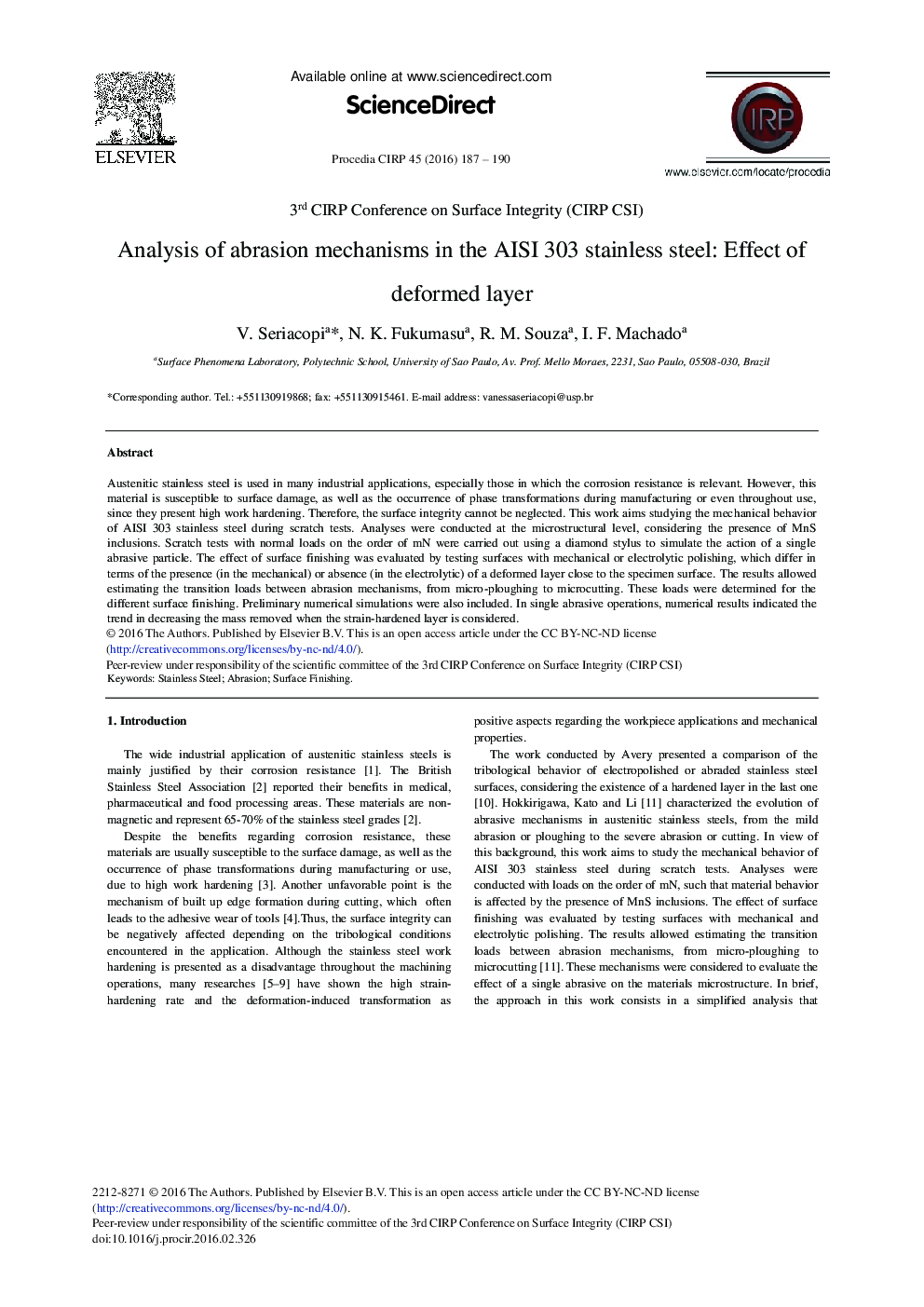| Article ID | Journal | Published Year | Pages | File Type |
|---|---|---|---|---|
| 1698507 | Procedia CIRP | 2016 | 4 Pages |
Austenitic stainless steel is used in many industrial applications, especially those in which the corrosion resistance is relevant. However, this material is susceptible to surface damage, as well as the occurrence of phase transformations during manufacturing or even throughout use, since they present high work hardening. Therefore, the surface integrity cannot be neglected. This work aims studying the mechanical behavior of AISI 303 stainless steel during scratch tests. Analyses were conducted at the microstructural level, considering the presence of MnS inclusions. Scratch tests with normal loads on the order of mN were carried out using a diamond stylus to simulate the action of a single abrasive particle. The effect of surface finishing was evaluated by testing surfaces with mechanical or electrolytic polishing, which differ in terms of the presence (in the mechanical) or absence (in the electrolytic) of a deformed layer close to the specimen surface. The results allowed estimating the transition loads between abrasion mechanisms, from micro-ploughing to microcutting. These loads were determined for the different surface finishing. Preliminary numerical simulations were also included. In single abrasive operations, numerical results indicated the trend in decreasing the mass removed when the strain-hardened layer is considered.
